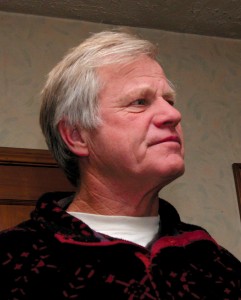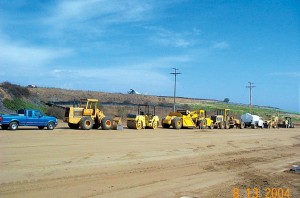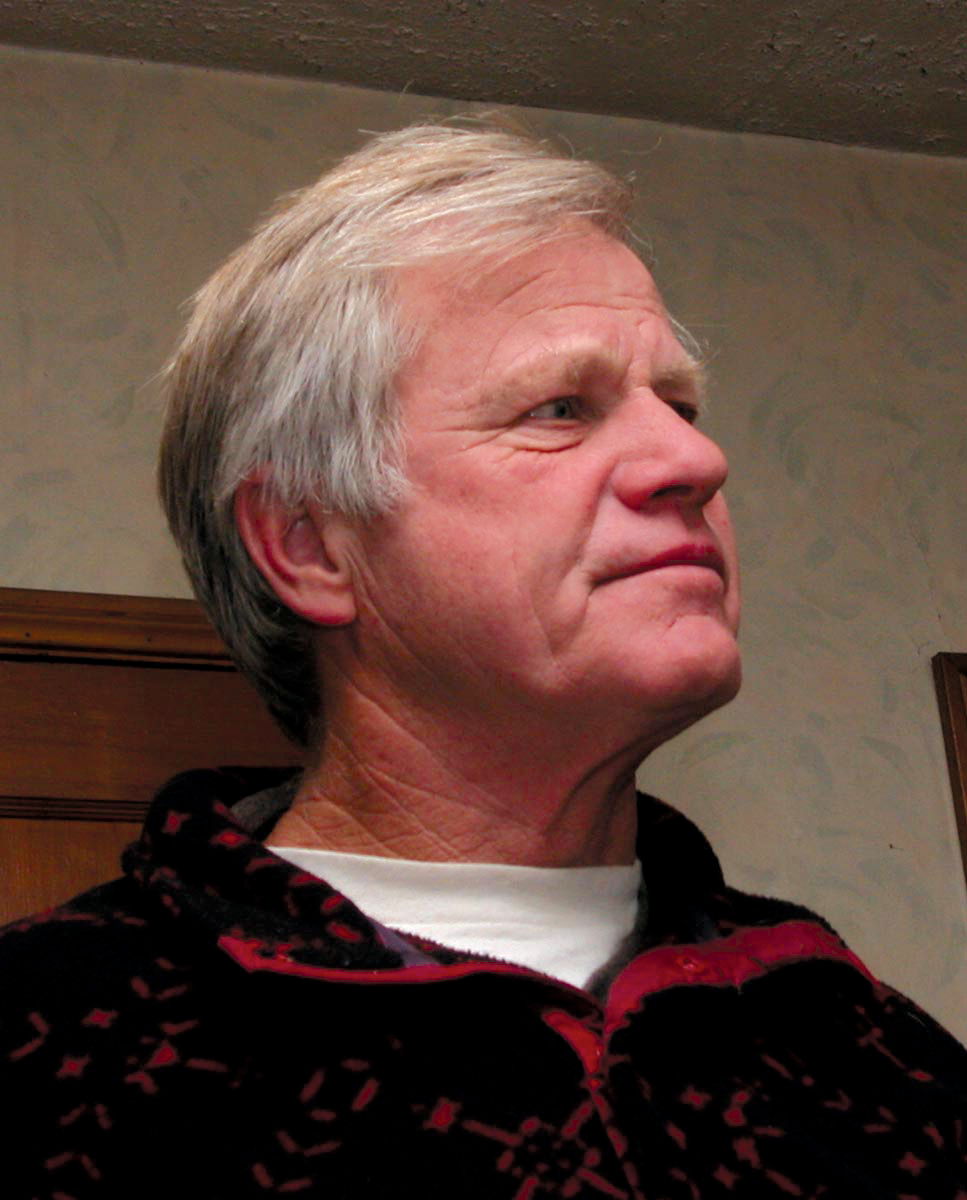By Lance Gurwell

David Mahlum is one of several developers who have worked diligently to restore Fallbrook Community Airpark to a modern facility.
California pilot David Mahlum has flown in and out of the unique Fallbrook Community Airpark (L18) in San Diego County for nearly 20 years. He’s always found it convenient and able to meet his needs in most ways.
Less than a mile from downtown Fallbrook, and 60 miles north of San Diego, it’s well located. It has a history for being friendly, in that the same family managed it for nearly 30 years. And, it’s unique, sited on a lone mesa a few hundred feet above the city.
Its spectacular runway views include Mt. Palomar, home to the world-famous 200-inch reflecting telescope, to the east. To the west is the Marine’s Camp Pendleton, to the south is the San Luis Rey Valley, and to the north sits the largely agricultural community of Fallbrook, most famous for its avocados, and a handful of celebrities who mostly want to remain anonymous.
The airport was built on 300 acres deeded to San Diego County by the Navy in 1968. Fallbrook Community Airpark, Inc., owned by Harry and Yvonne Aberle, operated it from 1969 through 1997.
After the airport was completed, it flourished, and within a few years, more than 100 airplanes were based there. As fixed base operators, the Aberles took pride in providing all the amenities pilots need and expect. They operated a flight school, owned six aircraft, and leased another. Naturally, fuel and other supplies were available, including hangars, shade hangars, and other necessities, some of which they built.
But in the past few years, Mahlum’s favorite airport had hit the skids, and Mahlum and many other area pilots could see it deteriorating before their eyes. What happened? Well, after almost 30 years of operating, San Diego County decided not to renew the Aberles’ contract—although the family still operates a business at the airport.
“I think the county wanted opportunities for someone else to come in and expand and renew the facilities, to get some new blood, so to speak,” Mahlum said.
Harry Aberle is now deceased, but Yvonne Aberle, who remains a feisty businesswoman at age 81, wasn’t shy in giving her point of view.
“I don’t know exactly why the county didn’t renew our lease, but the place started going downhill when the new FBO took over,” she said. “If that hadn’t happened, the place wouldn’t have fallen into the disrepair it has suffered in the past few years.”
It’s true that in the years immediately after the county took control of the airport, it faced numerous problems, and lost many of the aircraft that had been permanently based there, Mahlum said. Aberle adamantly agrees.

This photograph taken at the start of development about three years ago shows the general condition of the field. At one time, flower beds beautified the area.
“One of them (FBOs) just skipped out; no one’s sure where he is now,” Aberle said.
Mahlum offers a less personal summation of the airport’s problems.
“The problem was that there wasn’t a mechanism for anyone else to access property and make the airport grow,” Mahlum said. “After the county took over, there was a long growing period of seven years where the county tried to get another operator, but there was a failure to deliver by the candidates. There seemed to be also a failure of clear procedures within the county development process that required a certain degree of tenacity to see the process through.”
San Diego County and private investors have largely solved those problems. Mahlum believes the new airport manager hired by the county, developers and pilots are showing renewed interest. For the past three years, Mahlum, his two partners and several other developers have worked hard to stimulate growth and return the field to its previous glory.
L18 Airpark Corp., Mahlum’s company, and several others, stepped in, becoming major investors in an effort to restore the airport to its former splendor—and beyond. Most of the improvements are complete, and soon dozens of new hangars, shade hangars, and other amenities will come on line.
Peter Drinkwater, director of San Diego County’s airport system for the past 18 months, said Fallbrook Community Airpark is one of eight for which he is responsible. He concurred that things haven’t gone perfectly over the past few years, but he also said new development and management have the airport going in the right direction after several years of difficulties.
The county department also manages two business parks and a couple of museums, and is one of the few public airport systems in the U.S “to operate in the green,” Drinkwater said.
“David Mahlum has been a unique part of the improvements at Fallbrook,” Drinkwater said. “He’s built some unique shade hangers and he’s building some box hangars. Lee Ayers, another pilot, is building some box hangars, and the county has put in quite a few improvements.”
Drinkwater said they’ve put in a new transient ramp, as well as a helipad; they have a standby county attack helicopter for firefighting.
“In 1997, there were over 100 based aircraft at Fallbrook Airpark,” he said. Then the airpark went through some drastic changes.”
At that time, the airpark was under the exclusive management of a nonprofit group, Drinkwater said.
“The county began to take over management of the facility in 1997, but they (the Aberles) didn’t completely clear out until 1999,” he said. “When they cleared out of there, a lot of the old constructed buildings and things had to be removed.”
The result was a loss of many of the 100-plus airplanes on the field. By the time the exodus was complete, about 45 airplanes remained.
“Now, it’s on the way back up, and it’s because of these hangars that Mr. Mahlum has built, the new pavements and taxiways, the new beautiful box hangars that Dick Steere has built, and buildings Lee Ayers is building,” Drinkwater said.
Those improvements are bringing new business to the facility, Drinkwater said.
“We’re seeing that the numbers have grown beyond 60,” he said. “We’re going to be up around 80 aircraft by spring, and we’ll certainly be back over our numbers from 1997 and 1998 by next year.”
Drinkwater said future county plans include the building of new ramps, improvements to the east transient ramp, and runway rehabilitation, improving taxiways and drainage. Mahlum said drainage is a unique issue at Fallbrook, because the airport is atop the mesa, and the mesa has a series of terraces as it goes down to street level.
“We had a lot of hoops to get through to get permits and so forth,” Mahlum said. “It took over a year to get a septic permit, and over two years to get San Diego Gas and Electric project approval to move a 400-foot-long, high-voltage line off our leasehold. It took over a year and a half to get Fallbrook Public Utilities District to approve, budget and install the 400 feet of new water lines and three fire hydrants required to service our lease to the satisfaction of the county fire marshal.”
That would be enough to discourage most entrepreneurs, but Mahlum, Steere and Ayers were faced with still more obstacles.
“The Federal Aviation Administration required more than a year to approve moving the power lines, while approving the construction of a new line to service our project with electricity,” Mahlum said.
And because the power lines are in the approach fan of the Camp Pendleton airport, it took the FAA another year to get required permission from the Pentagon.
“All these approvals and improvements had to be paid for in advance,” Mahlum said.
More than 90 percent of his improvements were complete as of mid-January.
“By the time we’re complete, it will be almost four years since we started,” Mahlum said.
In addition to hangars, Mahlum’s project includes four offices and 36 mini storage units.
“We’ll be the only airport lease in the county that has real time webcams for security,” Mahlum said. “We’ve already started to set up the website so our tenants can receive notices of importance, view their accounts and view the webcams on the parking ramp.”
Steere completed six hangars in 2003. Carlsbad-based Aircraft Hangar Management, owned by Ayers, has developed a fuel service and is in the process of developing permits for 40 new hangars on its leasehold.

Work at the airpark required graders, concrete pumpers and numerous other pieces of heavy equipment. Here, some of the equipment is lined up in preparation for hundreds of hours of grading and other work.
Drinkwater said the county doesn’t have high-flying plans for the airport, and has no plans to enlarge it, but wants to see it cleaned up and returned to the place where it’s a community asset.
“There are no plans to expand the airport,” Mahlum said. “We just want to improve what we already have.”
Mahlum became a pilot shortly after a family vacation in 1980. While camping out in California, he saw a flyer a Continental Airline pilot had put up stating he’d exchange flying lessons for help building a new home.
“I jumped on my daughter’s bicycle and road up the road to a pay phone to call him,” Mahlum said. The arrangement worked out, and he now owns a 1968 Cessna 182.
“This year it qualifies as a historical plane eligible for property tax exemptions, with certain limitations,” Mahlum said. “I purchased it as a ‘fixer-upper,’ and continue to work on it, improving it from year to year.”
The plane is now in excellent condition, but proper maintenance and keeping the sun and salt air off the aircraft as much as possible is important in keeping it in pristine condition.
“It’s important to take good care of an airplane,” he said. “Flying through the air doesn’t wear out an airplane; improper maintenance and handling does.”
For more information about Fallbrook Community Airpark, call 760-723-8393, or visit [http://www.co.san-diego.ca.us/dpw/airports/fallbrook.htm]. To reach David Mahlum, contact the L18 Airpark Corporation at 760-728-7401, or visit [http://www.l18airpark.com/].












